Buildings are the faces of our cities. By the end of the Second World War in May 1945, Germany had lost face on many levels: morally, politically, diplomatically, and literally so in the case of its architecture. All of its major cities were largely destroyed and so were many of its institutional buildings, churches, town halls, and universities. Over the last 70 years, Germany has restored and rebuilt a considerable portion of its architectural heritage and its citizens have held countless debates as to whether these rebuilding campaigns were appropriate or not. Yet every case is different.
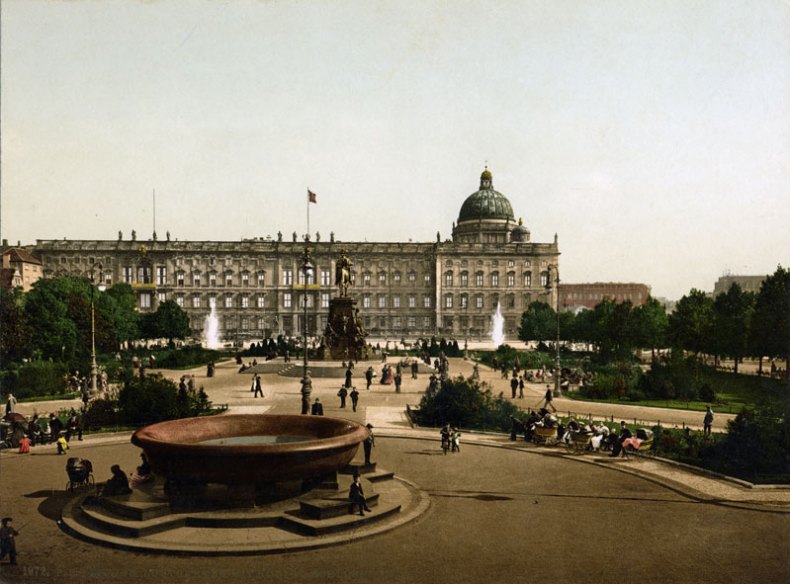
View from the Altes Museum of the Lustgarten, the equestrian statue of Frederick William III, and the north façade of the Stadtschloss in Berlin, in a Photochrom print of c. 1898. Photo: © akg-images
Berlin is currently filling a gaping void in its urban landscape. Only a stone’s throw from the Bode, Neues, and Pergamon museums, visitors to the German capital will stumble upon a curious sight: an enormous block of concrete that conjures up images of a multistorey car park, and lacks the light qualities of those intricate steel constructions to which we have become so accustomed. Berlin is rebuilding its Stadtschloss (or simply Schloss) – Germany’s equivalent of Buckingham Palace – the former headquarters of the Margraves of Brandenburg, Kings of Prussia, and German Emperors. The palace, largely damaged during the war, was eventually dismantled by the socialist regime of the GDR and the building now rising in its place will bear the name ‘Humboldt Forum’, in honour of the polymath brothers Alexander von Humboldt, the explorer, and Wilhelm, the diplomat. The overarching purpose of the forum will be to provide a platform for art exhibitions and intercultural exchanges.
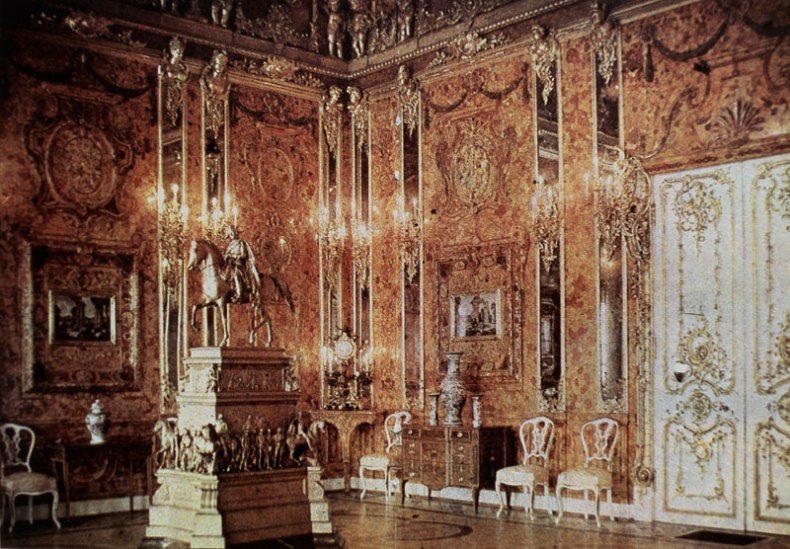
The Amber Room, designed by Andreas Schlüter for the Stadtschloss in Berlin and presented to Peter the Great in 1716. Shown here, with additions designed by Bartolomeo Francesco Rastrelli, at the Catherine Palace at Tsarskoye Selo, in a Photochrom print of c. 1938. Photo: © akg-images
The original Schloss in Berlin was an architectural palimpsest. At the turn of the 18th century, Frederick III, Elector of Brandenburg (1657–1713) – later Prussia’s first King – employed the widely travelled and extremely versatile architect and sculptor Andreas Schlüter (1664–1714) to turn the piecemeal medieval and Renaissance castle into a royal residence which would satisfy baroque ideals of symmetry and grandeur.
Frederick was a man of pronounced political ambitions and artistic appetite, and the new palace was designed to underpin his newly gained royal authority. Similar strategies were deployed by two neighbouring Protestant electors to attain, and then maintain, their new kingship: Augustus the Strong, Elector of Saxony, who became King of Poland in 1697, and Frederick’s brother-in-law, Georg Ludwig, Elector of Hanover – crowned King George I of England in 1714.
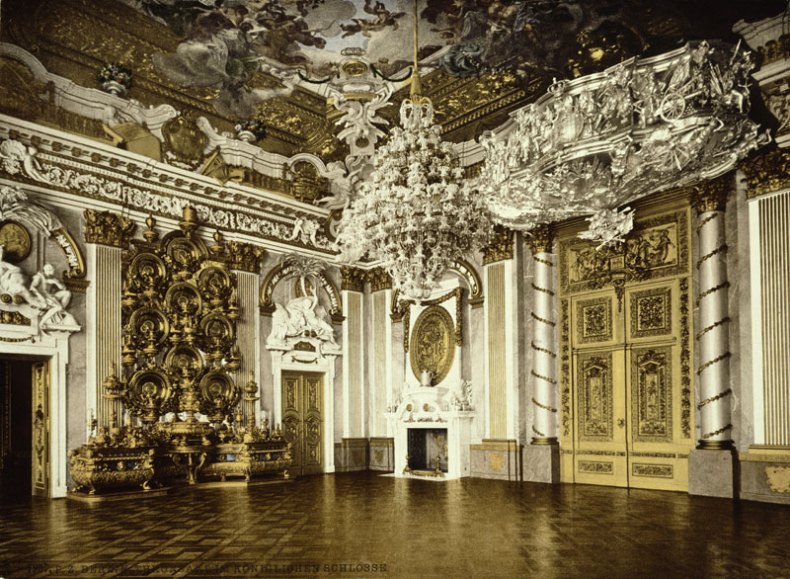
The Rittersaal (Knight’s Hall), designed by Andreas Schlüter in 1699 for the Stadtschloss in Berlin, in a Photocrom print of c. 1900. Photo: © akg-images
Schlüter had initially earned Frederick’s respect by delivering a monumental bronze statue of the king’s father, the Great Elector, mounted on a charger and cast as one piece – an incredible technical achievement. For the Schloss, Schlüter created an array of new state apartments, including the Amber Room, later presented to Tsar Peter the Great as a diplomatic gift in 1716, removed from Tsarskoye Selo by the Nazis in 1941, and now lost without trace. Schlüter’s centrepiece, however, was the Rittersaal (Knight’s Hall) which expanded a decorative scheme interlacing architecture, painting, and sculpture under the theme of the arts and sciences flourishing under Prussia’s recently installed monarchy. Unfortunately for the architect, his career at the Berlin court would come to an end as early as 1706, following the Münzturm disaster – an episode not dissimilar from Bernini’s failure to provide St Peter’s Basilica with bell towers. Frederick’s intention had been to expand the palace with a large tower to house a carillon he had acquired in the Low Countries. The medieval foundation of the palace, however, could not carry the weight of the tower, which had to be taken down again prior to its completion.
Numerous pictures, sculptures, tapestries, and other works of arts that furnished the Schloss survive – a comprehensive inventory of these has recently been compiled by the German art historian Guido Hinterkeuser, who devotes much of his scholarship to the history of the Berlin palace. One of the most remarkable survivals is Frederick’s throne settee, made when he was still only an elector. No other piece of furniture could so blatantly display his determination to become king. Rather than an electoral bonnet, it bears the hat of the dukes of Prussia – suspiciously resembling a royal crown – as well as Frederick’s cipher encircled by the Order of the Garter and flanked by two Garter Stars. Frederick had received Europe’s oldest chivalric decoration from his first cousin, William III, only months after the latter’s accession to the English throne; by prominently exhibiting his Garter, Frederick sought to show that the political weight of Brandenburg and Prussia was now internationally recognised.
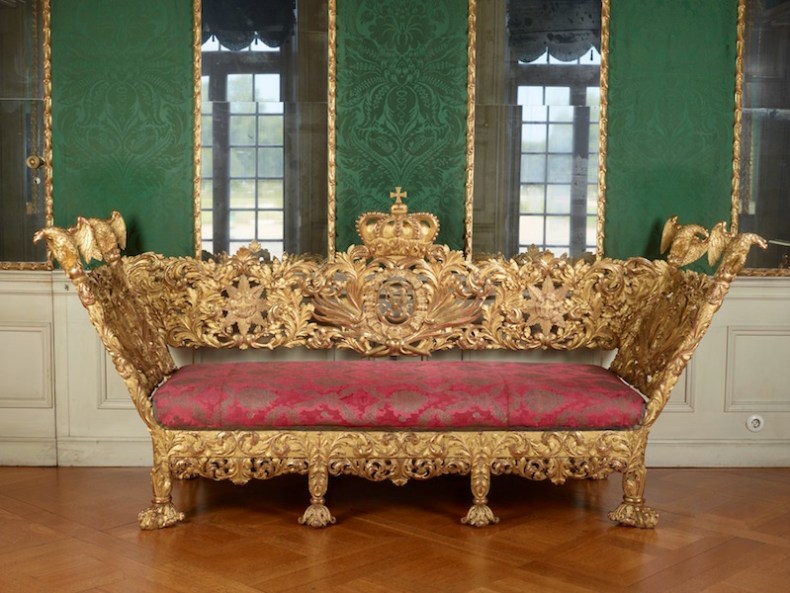
The throne settee made for Frederick III, Elector of Brandenburg, (c. 1690–95). Charlottenburg Palace. Photo: © Stiftung Preußische Schlösser und Gärten Berlin-Brandenburg/Wolfgang Pfauder
Kaiser Wilhelm II, Germany’s last Emperor, appears to have had a particular affection for the Berlin Schloss. A passionate patron of the arts and proponent of the neo-baroque, he had many of the palace’s rooms refitted and redecorated. To commemorate the 25th anniversary of the proclamation of the Second German Empire, Wilhelm commissioned his favoured sculptor Reinhold Begas to erect a memorial to his grandfather Wilhelm I facing the front gate of the palace – an arrangement not dissimilar from Sir Thomas Brock’s Victoria Memorial outside Buckingham Palace, designed half a decade later.
While large parts of both the Schloss and the memorial to Wilhelm I were destroyed by fire in 1945, overall the building could be secured. The decision taken by the government of the GDR to demolish the palace in its entirety in 1950 is said to have been triggered less by the high cost of preserving the building than by the desire to rid the cityscape of a symbol of Prussian imperialism. A quarter of a century later, a new edifice, the so-called Palace of the Republic, designed by Heinz Graffunder and covered almost entirely in brown mirror-glass, opened its doors on the same site. Intended as a palace for the people, it housed theatres, art galleries, and cafés; and while its architectural style was a clear repudiation of its predecessor’s elitism, it became the stage for all the great celebrations and banquets of the Communist elite.
After the fall of the Iron Curtain, the palace had to be closed owing to the 5,000 tons of toxic asbestos used in its construction. The removal of this asbestos between 1997 and 2002 required the complete destruction of all interiors and special fittings, and prompted fierce debates concerning the future of the building. Following these debates, in 2008 the City of Berlin and the German government decided to demolish the Palace of the Republic and replace it with a reconstruction of the original palace, which would consist of the three baroque façades facing north, west, and south, as well as a contemporary design, to replace the Renaissance front to the east, for which insufficient visual and documentary evidence survives.
There is an undeniable element of irony in the fact that the Communist palace, like its predecessor, was torn down due to difficulties in maintaining or restoring the building – paired, possibly, with a political agenda. After 1989, the Palace of the Republic was considered a reminder of both the GDR’s positive and negative sides. While some former GDR citizens had fond memories of the building, others saw it as an unwelcome symbol of the Communist regime. Why, however, rebuild the Schloss and not fill the gap with an entirely new building reflecting the free, open, and transparent democracy Germany is aiming to be today (that is, if such a building has to carry any political connotation at all)?
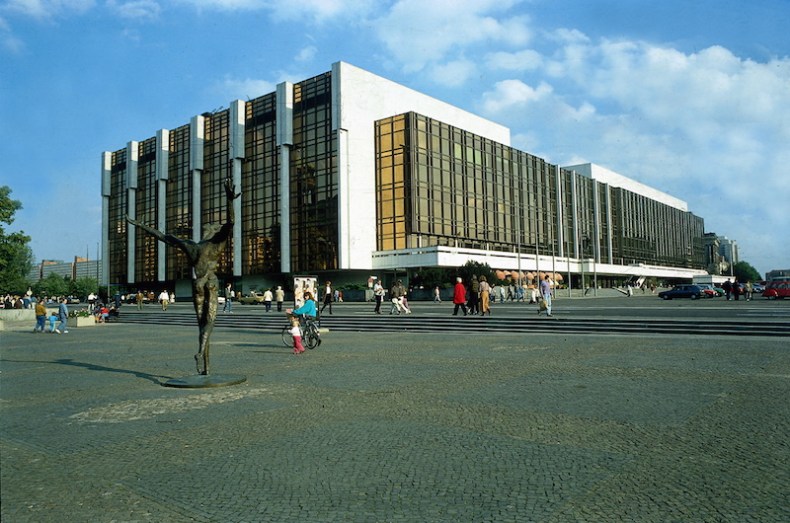
Photograph of the Palast der Republik in Berlin in 1990, designed by Heinz Graffunder and built on the site of the former Stadtschloss in 1973–76; demolished in 2008. Photo: Klöchner/ullstein bild via Getty Images
It is somewhat surprising that, almost a century after Germany has ceased to be a monarchy, attempts are still underway to recreate some of its lost royal architecture. Since 1945, the country has developed something of a tradition in rebuilding its palaces. Once one rebuilding scheme had been carried out successfully, it lent legitimacy to subsequent projects. The debate about the Schloss in Berlin and the government’s eventual approval of its reconstruction has unquestionably encouraged more recent schemes, such as Braunschweig (2007), Herrenhausen (2013), and Potsdam (2014), which followed the Berlin model of historic façades with modern interiors.
In cities where the means were available, and sufficient architectural structure and furnishings have survived the turmoil of the war, there have been much earlier attempts to restore the palaces to their former splendour. Such was the case with the Munich Residenz and Schloss Charlottenburg.
As the rebuilding of Charlottenburg began in West Berlin in the 1950s, the ‘Goethehaus-Debatte’ arose in Frankfurt. As was the case in Berlin, very little was left of Frankfurt’s historic city centre. The architectural casualties included the birthplace and childhood home of Johann Wolfgang von Goethe. Its 1940s director, Ernst Beutler, was determined to rebuild the house. He insisted on the seminal cultural importance and function of the place, asserting that any museum dedicated to a historical figure, whether in the original building or not, would be a reconstruction, and that therefore even the previous, original building had been a reconstruction of sort.
His opponents argued in turn that such a rebuilding would be read as a deliberate attempt to conceal and forget the atrocities of the war and the Holocaust. The German people, so the argument went, had forfeited their rights to associate themselves with the Enlightenment for which Goethe and his contemporaries stood, and would have to start completely from scratch; Germany could and should not simply recreate an image that had been so scarred by the country’s actions. Others countered with the argument that these buildings were integral parts of Germany’s heritage, and that for all the horror and misery the First and Second World Wars had caused, 1,000 years of German history could not be reduced to the years 1914–18 and 1939–45.
Another problem arose in regard to royal and princely residences. According to Renaissance architectural theory, building façades should advertise their content like the frontispieces of books. What happens, however, if a façade is cleared of the content it once advertised? Without any monarchs, what were Germany’s reconstructed palaces going to house? Some palaces found new life as museums, university buildings, or local parliaments. These were generally met with approval. Some restorations and re-buildings, however, have failed to avoid public controversy. In 2007, for instance, the City of Braunschweig was widely mocked after it re-erected the façade of its palace – which no longer serves as frontispiece to sophisticated suites of state rooms, but rather a shopping mall. And to make sure that no outsider would confuse Potsdam’s most recently rebuilt city palace for the dwelling of a king, the artist Annette Paul suggested paraphrasing Magritte and adorning the façade with the words: ‘Ceci n’est pas un château’.
The reconstruction scheme – albeit not of a palace – that has been the greatest encouragement to other projects is the remarkably tactful recreation of the Frauenkirche in Dresden. Completed in 2005, it incorporates all the original stones, stained black by bombing, which had been piled up to a huge mound in the middle of the city for five decades. The re-erection and restoration of Dresden’s schloss began slowly in the 1960s, but really took off only at the turn of the millennium. One of the inner courtyards has been roofed in very successfully in 2010 with a large bombé skylight designed by the architect Peter Kulka; some former royal apartments are yet to be restored to their former appearance – a campaign that is not without criticism. The suite of rooms overlooking the romantic yet scarred skyline of Dresden’s towers and spirals are now rustic and bare and very suggestive of the palace’s turbulent history. They also lend themselves extremely well to the display of contemporary art, as was demonstrated last year by ‘Supermarket of the Dead’, an exhibition on fire offerings in China.
Hartwig Fischer, the outgoing director of the Dresden State Collections, which include the schloss, is about to replace Neil MacGregor at the British Museum, while MacGregor himself is going to form part of the Berlin triumvirate of esteemed scholars – the others are Horst Bredekamp and Hermann Parzinger – appointed to develop a detailed concept for the Humboldt Forum. What visitors will lay their eyes upon in its galleries remains uncertain. Originally, the museum was to display the national collections of non-Western art. It may also have a section on the history of Berlin, Brandenburg, and Prussia, and on Germany’s colonial history; or, indeed, in the long run, it may include some recreated historic interiors. A fully fledged concept, however, has yet to be presented to the public.
Only time will tell if the façades of the Schloss in Berlin will account for a convincing copy of Schlüter’s work. The palace was of considerable importance – a rare example of non-sacred Protestant baroque architecture on a grand scale, even if its generous architectural vocabulary was closer to the visual languages of Catholicism and absolutism. Frederick’s love of pomp and his eagerness to establish himself and his house on the European political stage certainly trumped any notions of the sobriety that we tend to associate with German Protestantism. The reconstruction of the Berlin Schloss could be dismissed as a fake but, in that respect, so is the Doge’s Palace in Venice, destroyed by fire in 1577 and rebuilt in its original form – although Palladio himself had supplied designs for a completely new building. In spite of this, to this day, the Doge’s Palace is regarded as the most significant example of non-sacred gothic architecture in the world. It is appealing to apply the argument of architectural uniqueness to the schloss in Berlin, but this would have been equally valid for the Palace of the Republic…
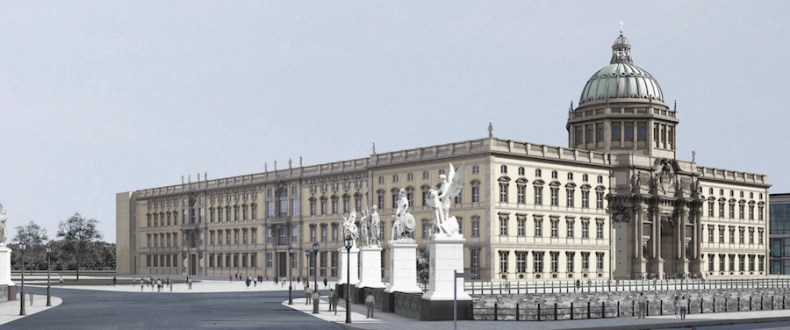
Render of the Humboldt Forum in Berlin, designed by Franco Stella. Image: © Berlin Palace–Humboldt Forum Foundation/Franco Stella
Over the last 30 years, Britain has also witnessed the destruction and reconstruction of some of its most important historic landmarks: Hampton Court (1986), Uppark (1989), and Windsor Castle (1992) – all of which were restored to their former selves. The fact that these buildings were the victims of accidental fires rather than military actions, however, meant that their restoration was not charged with the same degree of controversy as in Germany – especially since Windsor, as opposed to Berlin’s Stadtschloss, continues to be the central stage of a monarchy. Still, last year’s devastating fire at Clandon Park is triggering new debates. The damage was so great that the decision was taken to restore only the state rooms on the ground floor, while the rooms on the first floor will be almost entirely new. Dame Helen Ghosh, the National Trust’s director general, has announced that the Trust will be launching a competition later this year to create new galleries for temporary displays – and has said that she hopes that the public discussion will be lively.
The debate as to whether Berlin is in need of a rebuilt royal palace has gone quiet, since it is too late to stop the construction; it is the new function that must be addressed. Will the content be worthy of the elaborate façade? The eyes of the world will soon be on the Schloss – not just for its success or failure as a museum or as an exercise in reconstruction, but as yet another intriguing example of Germany’s engagement with its cultural and political past.
From the March issue of Apollo: preview and subscribe here
Unlimited access from just $16 every 3 months
Subscribe to get unlimited and exclusive access to the top art stories, interviews and exhibition reviews.

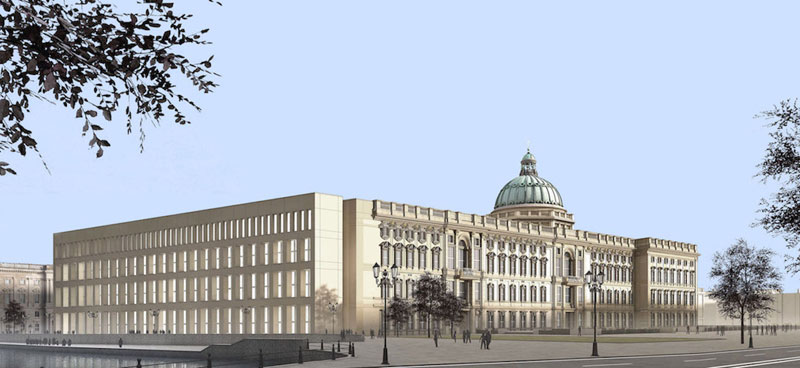
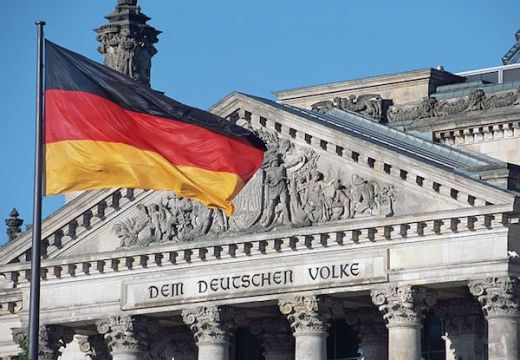
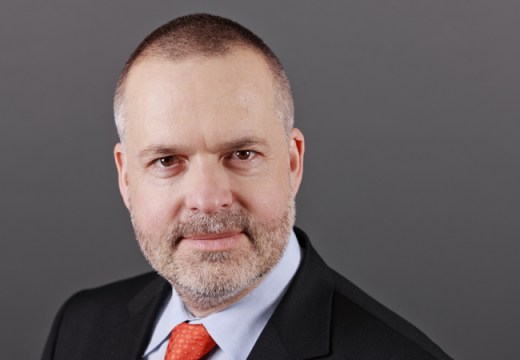
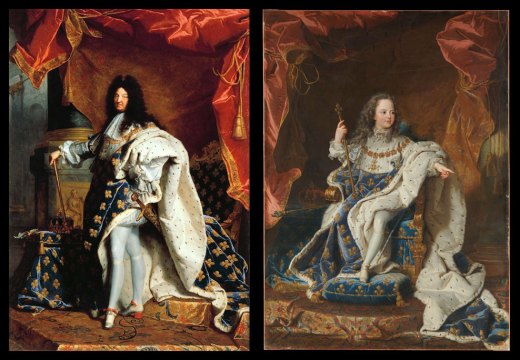









![Masterpiece [Re]discovery 2022. Photo: Ben Fisher Photography, courtesy of Masterpiece London](http://www.apollo-magazine.com/wp-content/uploads/2022/07/MPL2022_4263.jpg)
Has the Fitzwilliam lost the hang of things?